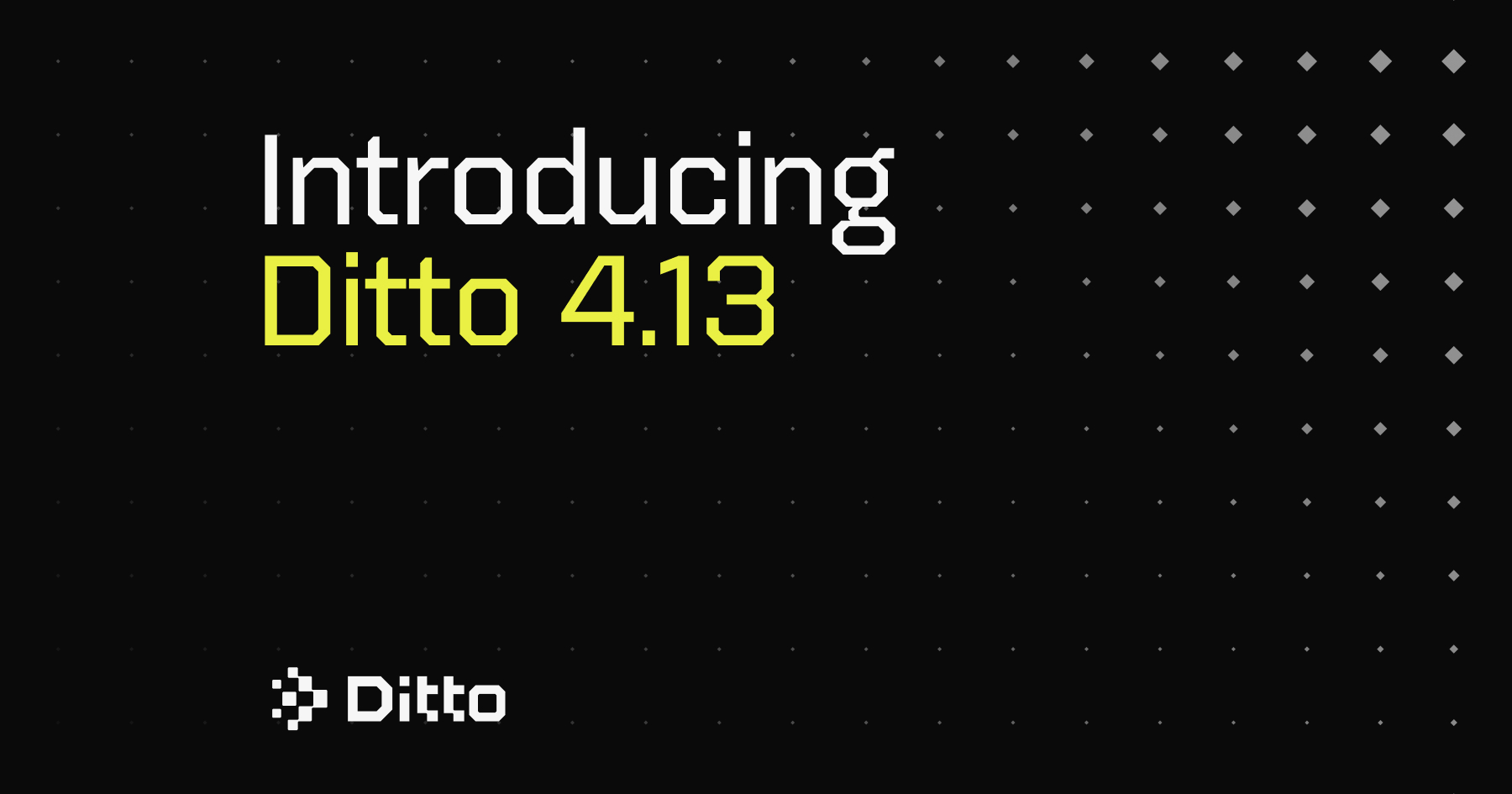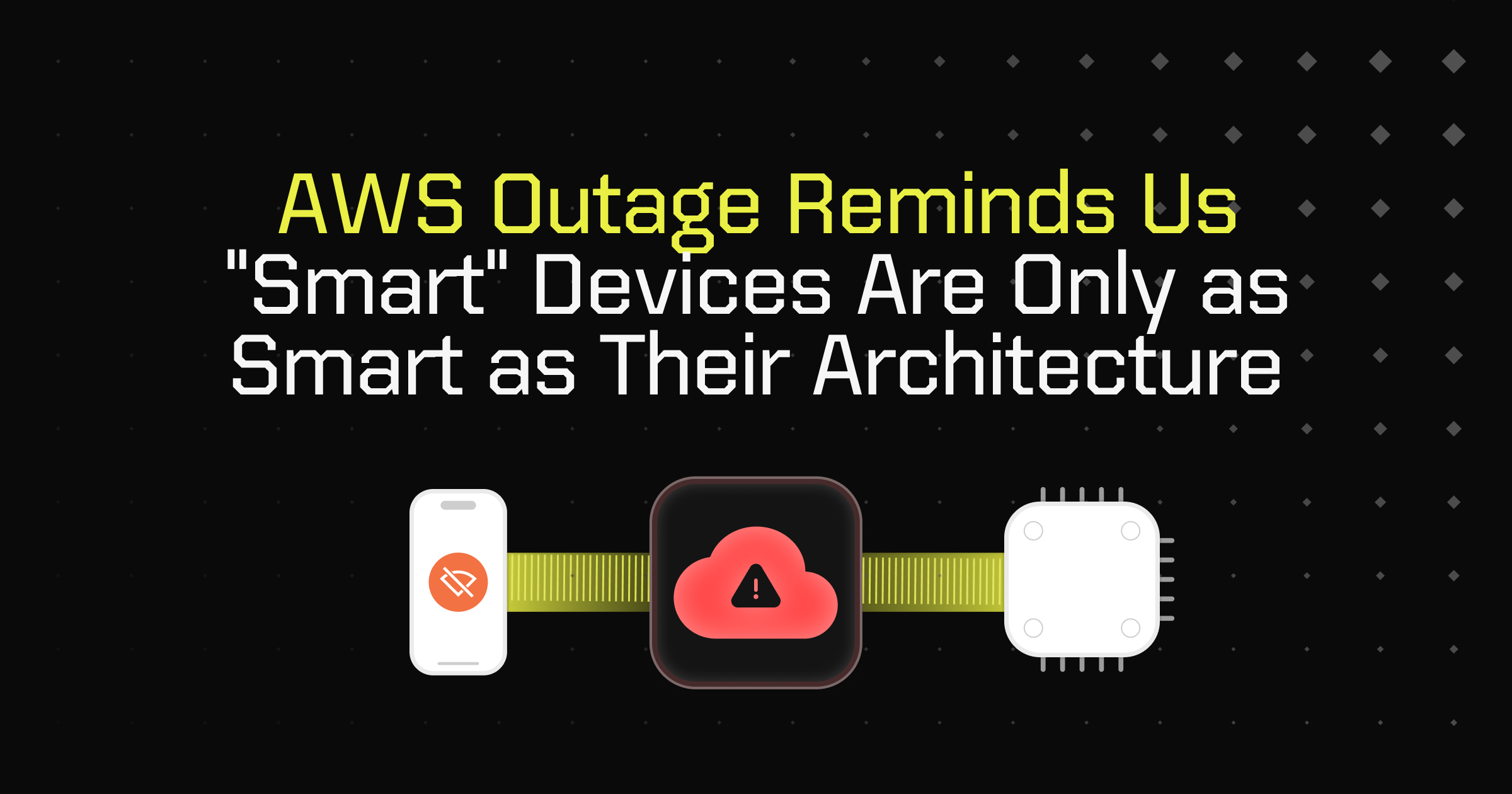Published OnJuly 30, 2025July 14, 2025
Dorsey’s Bitchat is New, the Underlying Technology Isn’t
Jack Dorsey’s Bitchat introduces peer-to-peer messaging that works even without the internet. Ditto, with similar underlying technology, has been growing into the enterprise for years. How do they compare, and what would it look like if Bitchat used Ditto?

Jack Dorsey, co-founder of Twitter and CEO of Block, recently unveiled a new messaging app called Bitchat – and it’s causing quite a stir. Bitchat is unique because it lets people send encrypted messages without any internet connection or cellular service. Instead of routing texts through cell towers or Wi-Fi, Bitchat uses direct device-to-device links. Phones form a local Bluetooth mesh, passing messages along from one to another so your chat can reach its destination even if you’re not in direct range. In effect, your phones become the network. Messages are end-to-end encrypted and never touch a central server, disappearing by default so your chats stay private. Dorsey calls Bitchat a “weekend experiment” in Bluetooth mesh networking, relays, and store-and-forward messaging, but it taps into something many people crave today: communication that doesn’t depend on traditional networks and can’t be easily shut down or censored.

Offline Networking – More Prevalent Than You Might Think
While Bitchat might sound revolutionary, its core idea is not new. Techies have explored offline, phone-to-phone networking for years. The now-defunct app FireChat is one famous example that used Bluetooth and Wi-Fi Direct to enable offline group chats at music festivals, protests, and after natural disasters. Bitchat is essentially reviving and refining these concepts, with stronger encryption and privacy protections than earlier attempts. The ability to “mesh” devices together in a peer-to-peer network means that people can still share information locally even if the broader internet or power grid goes down. It’s a powerful idea with growing appeal as internet shutdowns and censorship become more common worldwide. However, this technology can be used for more than music festivals and protests. Similar underlying technology has quietly been making its way into everyday business and government applications over the past few years, powered by Ditto.
Since 2018, Ditto’s Edge SDK has been available, enabling apps to work peer-to-peer over Bluetooth, peer-to-peer Wi-Fi, LAN, and other transports, without central servers or constant internet required. Ditto’s mobile database provides an out-of-the-box framework to integrate real-time, offline peer-to-peer sync and mesh networking into any application desired. Run it on phones, tablets, laptops, even IoT hardware, and Ditto’s out-of-the-box networking intelligence automatically discovers other devices nearby and syncs data directly.
Sound familiar? It’s the same principle that Bitchat uses for text messages, but it is applied more broadly to any kind of data sync. The devices form an ad-hoc mesh network – much like Bitchat’s phones do – so information can propagate from device to device in real time, without needing a cloud server as a middleman.

What if Bitchat Used Ditto?
BitChat is a fascinating experiment in peer-to-peer communication, but it’s still in its early stages. By integrating Ditto’s mature peer-to-peer and mesh networking stack, BitChat could rapidly expand its capabilities while preserving its offline-first, decentralized philosophy.
At present, Bitchat forms a mesh network using only Bluetooth Low Energy (BLE), delivering encrypted messages through store-and-forward relays. The app supports iOS/macOS and keeps messages ephemeral by default, limiting persistence and long-term usability, especially if users are disconnected for a long time.
Ditto can help BitChat in key areas while preserving its commitment to simplicity and privacy. By leveraging Ditto, BitChat can:
- Expand beyond BLE to increase speed by adding Peer-to-Peer Wi-Fi Direct, LAN, and more as available offline transports, which have higher bandwidth and sync speeds.
- Support large file sync, such as videos, images, and audio (thanks to the higher bandwidth transports mentioned above), bringing it closer to feature parity with top messaging apps, but still staying offline.
- Expedite cross-platform support with Android, Windows, and more thanks to Ditto’s wide library of SDKs
- Enable persistent offline storage, so messages are durable even after restarts and automatically sync when peers reconnect. Ditto’s offline-first database prioritizes local writes to ensure zero data loss.
- Unlock more consistent messaging and group chat functionality with CRDT-based conflict resolution. Messages from multiple users, even if sent while offline or out of range, are automatically ordered and merged without conflicts. This unlocks the potential for group chat functionality by ensuring chats remain coherent and in the correct sequence across all devices.
- Easily introduce a hybrid routing approach, peer-to-peer through the mesh, alongside opportunistic cloud sync. This gives Bitchat optional remote reach while still remaining local-first. If one device within the mesh has access to the cloud, all connected users can push/pull messages through the cloud, essentially expanding the reach of the internet. This is powerful for end-users in dead zones or areas with intermittent connectivity who, with Ditto, can act online despite being offline.
Ditto’s networking layer, the “Rainbow Connection”, can juggle multiple communication channels at once. Whether it’s Bluetooth Low Energy, Peer-to-Peer Wi-Fi, Local Area Network, traditional WiFi, or even cellular connectivity, the software will automatically switch to whichever transport is fastest and most reliable at the moment between any two devices, without the developer or user having to do anything. Devices coming in and out of range? Ditto dynamically adjusts, even doing multi-hop routing (i.e., relaying data across intermediate devices) to reach distant peers. With multi-hop sync, the sync distance is essentially limitless. Ditto has built a self-healing mesh for applications backed by robust routing logic, transport flexibility, and sync integrity.

Real-World Applications of Mesh Networking Beyond Chat
This technology can be used for so much more than just chat. Many forward-thinking enterprises and organizations use Ditto to ensure their critical apps stay connected and in sync, even when traditional networks are unavailable or unreliable. Here are a few examples of who’s already embracing this mesh networking approach and what value they’re seeing:
- Chick-fil-A: The popular restaurant chain revamped its point-of-sale system to be cloud-optional and resilient to internet outages using Ditto. Their next-generation POS can run fully offline—taking orders and processing payments without Wi-Fi—which makes it far more resilient to network outages and faster for customers during peak times. The result has been a more reliable in-store experience and even a faster development cycle; leveraging Ditto’s ready-made peer-to-peer data sync, Chick-fil-A finished its new POS rollout two years ahead of schedule.

- Delta Air Lines: With Ditto’s SDK, Delta’s developers added reliable peer-to-peer messaging and data sync throughout the cabin in just a few months. Now flight attendants can chat and share updates from anywhere on the plane, even at 30,000 feet, without relying on in-flight Wi-Fi. Phones and tablets carried by crew form a mesh network covering the entire aircraft, and devices communicate directly or relay through nearby peers to reach the other end of the plane, giving complete coverage on both narrow and wide-body jets.

- U.S. Air Force: Even the military is leveraging mesh networking for its needs at the tactical edge. The U.S. Air Force recently awarded Ditto a multi-year contract – Ditto’s largest government deal to date – to deploy its edge-sync platform for missions where connectivity is limited or compromised. Warfighters often operate in “degraded network environments” (think disaster zones or contested areas with no reliable comms). By using Ditto, Air Force teams can share data, maps, and messages directly device-to-device in real time, without needing a satellite link or external infrastructure. This peer-to-peer capability provides decision superiority: soldiers and airmen get the information they need when needed, even if the cloud or central servers are unreachable.
A Peer-to-Peer Future
Jack Dorsey’s Bitchat may be grabbing headlines as a novel way to message without the internet, but as we’ve seen, the underlying mesh networking technology has been around and quietly proving itself at scale for years. From fast-food restaurants to jumbo jets to military bases, peer-to-peer connectivity is solving real problems today. The common thread is resilience: whether it’s a government shutting down networks, a plane flying out of range, or a retail store’s Wi-Fi going down, systems built on mesh networking keep on working.
In Bitchat’s case, the benefit is personal communications that are private and censorship-resistant – “off-the-grid” chats that no one can eavesdrop on or block. In enterprise cases like Ditto’s customers, the benefit is uninterrupted operations and real-time data access, which translates to better customer service, safety, and productivity even when networks fail. It’s the same idea, implemented in different contexts. By letting devices communicate directly and form their own networks, we remove single points of failure and hand more control to the users at the edge.





